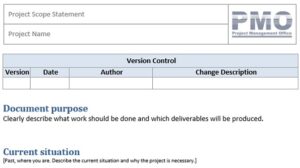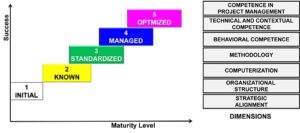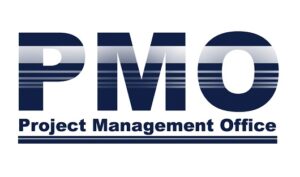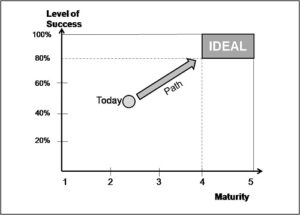While time has always been a defining factor for project success, the Schedule Performance Domain in the PMBOK® Guide – Eighth Edition reframes its management through a broader and more adaptive lens.
In earlier editions, scheduling was largely about building baselines and tracking slippages. In PMBOK 8, the focus shifts toward flow, cadence, predictability, and adaptability. This new domain encourages project managers to view schedules as value-delivery enablers, not just as timelines.
What Is the Schedule Performance Domain?
The Schedule Performance Domain is all about ensuring that a project timeline is realistic, flexible, and value-focused. This domain emphasizes the need for project managers to maintain a balance between staying on schedule and adapting to changes that add genuine value to the project. It’s not limited to Gantt charts or network diagrams; rather, it encompasses all practices that balance delivery speed, resource flow, and stakeholder expectations.
An effective schedule domain ensures that:
- Work progresses at a sustainable and value-oriented pace.
- Teams coordinate dependencies and deliverables effectively.
- Adjustments to timing reinforce alignment with strategic goals.
By defining scheduling as a performance domain, PMBOK 8 integrates it with governance, finance, and scope decisions—making time management a systemic performance factor, not an administrative one.
Flexibility
Flexibility is crucial in modern project management. Instead of rigid timelines, PMBOK 8 encourages adaptable schedules that can respond to unforeseen changes. For instance, if a team member spots an opportunity to improve a product feature, the schedule should allow for adjustments to seize that opportunity without derailing the entire project.
Value-Driven Scheduling
Value-driven scheduling focuses on prioritizing tasks based on their impact on the project’s overall value. This means identifying which tasks contribute most to the project’s goals and ensuring they are completed first. For example, in a software development project, delivering a critical feature that meets customer needs should take precedence over less impactful tasks.
In essence, the Schedule Performance Domain is about crafting a schedule that serves the project objectives while remaining open to changes that enhance its value. This approach not only keeps the project on track but also ensures it delivers the maximum benefit to stakeholders.
From Baselines to Flow: The Evolution of Scheduling
Traditional scheduling often revolved around creating a single “master plan” (fixed baselines). Deviations were treated as exceptions rather than opportunities for adaptation. PMBOK 8 introduces a modern view rooted in flow-based management and incremental value delivery. This new approach prioritizes the ability to adjust plans as projects progress, ensuring that teams can respond swiftly to new information and opportunities. This adaptability is crucial in today’s fast-paced environments where change is a constant factor.
Key Evolutions in PMBOK 8:
- Continuous planning instead of static plans.
Teams update schedules as new information emerges. - Cadence replaces fixed milestones.
Regular review cycles keep progress visible and adjustable. - Flow metrics complement time tracking.
Instead of tracking hours alone, teams analyze throughput and lead time. - Integration with multiple life cycles.
Whether predictive, adaptive, or hybrid, scheduling aligns with delivery rhythm.
This shift represents a practical response to today’s dynamic project environments, where speed and flexibility coexist.
Establishing a Value-Driven Schedule
Creating a schedule that drives value requires connecting timing decisions to outcomes. In the Schedule Performance Domain, the “why” behind each deadline matters as much as the “when.” This approach ensures that every task and milestone directly contributes to delivering value to stakeholders. The first key step is to clearly define the project’s objectives and outcomes (why), allowing teams to align their efforts with these goals.
Key Steps:
- Clarify project cadence. Determine the appropriate cycle—weekly sprints, monthly releases, or milestone reviews.
- Define deliverable flow. Align tasks around value increments rather than work packages alone.
- Identify dependencies and constraints. Map critical relationships early, especially cross-team or cross-vendor dependencies.
- Prioritize visibility. Use visual tools—roadmaps, Kanban boards, burndown charts—to make schedule health transparent.
- Validate stakeholder expectations. Communicate timing implications for decisions, funding, and benefits realization.
When value dictates scheduling, teams focus on outcomes instead of mere task completion. For instance, if a project aims to enhance customer satisfaction, activities that directly improve user experience should take precedence. This not only keeps the team focused on what truly matters but also ensures resources are allocated efficiently.
Prioritization becomes even more crucial when resources are limited. By assessing the importance and urgency of each task, project managers can sequence activities that offer the greatest benefit first. For example, a software development team might prioritize feature development over non-critical updates to meet a launch deadline, ensuring the most valuable elements are completed on time.
Implementing a value-driven schedule encourages teams to be agile and responsive, ultimately leading to successful project outcomes that resonate with stakeholders.
Balancing Predictability and Adaptability
The Schedule Performance Domain highlights the need to balance predictability (commitment to dates) with adaptability (capacity to adjust to change).
- In predictive projects, consistency and baselines remain essential for governance.
- In adaptive projects, short-term cycles and rolling wave planning offer agility.
- In hybrid approaches, both coexist—long-term direction is set, while short-term delivery adapts.
PMBOK 8 emphasizes that this balance is not binary but contextual. Tailoring ensures the schedule approach fits the project’s risk, complexity, and stakeholder environment, allowing projects to remain on track while also being flexible enough to adapt to changes.
Predictability involves setting clear schedules and expectations, giving teams a roadmap to follow. This allows for efficient resource allocation and provides stakeholders with a sense of security. However, too much rigidity can hinder a project’s ability to respond to unforeseen challenges or opportunities.
Adaptability, on the other hand, is about being open to change and making adjustments as needed. This flexibility ensures that projects can pivot in response to emerging needs or external factors, ultimately leading to more resilient outcomes. It’s about having the freedom to innovate without deviating from the project’s core objectives.
By integrating both predictability and adaptability, project managers can create schedules that are robust yet flexible. This dual approach enhances the ability to deliver on time while still accommodating the dynamic nature of project environments.
Integrating Schedule With Other Performance Domains
Time management is interdependent with nearly every other domain:
- Scope Performance Domain: Changes in scope directly impact sequencing and duration.
- Finance Performance Domain: Cash flow and budget release often follow scheduled milestones.
- Resources Performance Domain: Team availability drives task timing and cadence.
- Governance Performance Domain: Decision gates and reviews influence scheduling checkpoints.
This systems view reinforces the PMBOK 8 principle of adopting a holistic perspective—managing time as part of an integrated ecosystem rather than as a siloed discipline.
Managing Flow and Cadence
Cadence-based delivery is a scheduling approach that emphasizes regular, predictable intervals for project tasks and deliverables. This method ensures that teams maintain a steady workflow, preventing bottlenecks and enhancing efficiency. By setting these intervals, teams can better align their efforts with the project’s overall goals, fostering a rhythm that keeps everyone on track.
Flow efficiency is the ability of work to move through the system without unnecessary delays or bottlenecks.
To effectively manage flow and cadence, practical techniques such as timeboxing and iterative reviews are essential. Timeboxing involves allocating a fixed time period for each task, helping to maintain focus and prevent scope creep. Meanwhile, iterative reviews allow teams to assess progress regularly, making adjustments as necessary to stay aligned with project objectives.
These techniques not only promote a structured work environment but also ensure that project milestones are consistently met, ultimately supporting the successful achievement of project goals.
Practical Techniques:
- WIP (Work-In-Progress) limits: Prevent multitasking overload and enhance throughput.
- Cycle time measurement: Evaluate how long a work item takes from start to finish.
- Lead time tracking: Monitor time from request to delivery to manage stakeholder expectations.
- Cumulative flow diagrams: Visualize where work accumulates and why.
When teams manage flow instead of merely tracking dates, schedule performance improves naturally.
Tailoring the Schedule Performance Domain
Tailoring allows organizations to adapt scheduling practices to their maturity and delivery models. Examples include:
| Project Type | Tailoring Example |
|---|---|
| Predictive | Use a detailed network diagram with a critical path and earned schedule metrics. |
| Agile | Use timeboxes (sprints) and a product backlog ordered by priority. |
| Hybrid | Combine milestone tracking for governance with agile iteration cycles. |
Tailoring decisions should be documented as part of the Governance Performance Domain, ensuring transparency and repeatability.
Begin with understanding the project’s goals and stakeholder expectations. By aligning the schedule with these objectives, you create a roadmap that resonates with the project’s vision and mission. This alignment helps in maintaining focus on delivering value throughout the project lifecycle.
Next, consider the complexity and size of the project. Smaller projects might benefit from a leaner schedule, whereas larger ones might require more detailed and comprehensive planning. Tailoring involves selecting the appropriate level of detail and control to manage the project effectively.
Finally, keep in mind that flexibility is key. As projects progress, unforeseen challenges may arise. A tailored schedule allows for adjustments, ensuring the project remains on track despite changes. By regularly revisiting and refining the schedule, you ensure it continues to serve the project’s best interests.
Effective tailoring of the Schedule Performance Domain not only facilitates smoother project execution but also enhances stakeholder satisfaction by delivering outcomes that truly meet their needs.
Measuring Schedule Performance
Performance indicators move beyond on-time delivery. They measure whether timing contributes to value realization and team health.
Common Schedule Metrics
- Schedule Variance (SV): quantifies the difference between planned progress and actual progress, helping project managers identify potential delays early.
- Schedule Performance Index (SPI): offers a ratio of earned value to planned value, indicating the efficiency of time utilization. An SPI of 1.0 indicates perfect alignment, while values below 1.0 suggest delays.
- On-Time Delivery Index (OTDI): Ratio of completed deliverables to planned deliverables within the time frame.
- Flow Efficiency Ratio: Percentage of time work items actively progress versus waiting.
- Schedule Predictability: Degree to which actual cadence aligns with planned cadence.
- Throughput Trend: Average number of completed items per cycle.
- Lead Time Variance: Fluctuation between expected and actual delivery duration.
Tracking these metrics offers a balanced view of speed, stability, and adaptability. They also are crucial for maintaining control over the project timeline and ensuring that time is well spent, leading to successful project outcomes.
Common Scheduling Challenges and Mitigation Strategies
| Challenge | Mitigation Strategy |
|---|---|
| Unrealistic deadlines | Engage stakeholders early to co-define achievable cadence. |
| Poor visibility | Implement digital dashboards and cumulative flow diagrams. |
| Frequent context switching | Use WIP limits and clearly prioritize work. |
| Dependency bottlenecks | Integrate dependency mapping into planning workshops. |
| Misalignment with governance | Synchronize schedule checkpoints with governance decision cycles. |
These practices align with performance philosophy—using data and collaboration to drive continuous improvement.
Comparative Analysis
Understanding the dynamics between traditional and Agile scheduling is essential for effective project management. Traditional scheduling relies on detailed planning, often laid out at the project’s inception. In contrast, Agile scheduling embraces flexibility and iterative progress. The table below highlights key differences:
| Aspect | Traditional Scheduling | Agile Scheduling |
| Planning | Fixed, upfront | Flexible, iterative |
| Change Management | Less adaptive | Highly adaptive |
| Focus | Tasks and milestones | Value and delivery |
| Feedback | End of project | Continuous |
Modern approaches, like Agile, offer significant advantages. They emphasize delivering value quickly through continuous feedback, allowing teams to adapt to changes efficiently. This adaptability enhances responsiveness to market demands and stakeholder needs, ensuring that project goals align closely with evolving priorities. By embracing these modern techniques, project managers can better balance predictability and flexibility, achieving more dynamic and successful project outcomes.
FAQ on Schedule Performance
As you delve into the intricacies of the Schedule Performance Domain in PMBOK 8, you might have some questions. Here are the answers to a few common inquiries:
Q: What is the main goal of the Schedule Performance Domain in PMBOK 8?
A: The primary aim is to ensure that scheduling aligns with project objectives, delivering value through flexible planning and cadence-based delivery.
Q: How does PMBOK 8 address the need for flexibility in scheduling?
A: PMBOK 8 emphasizes adaptability by encouraging project managers to incorporate iterative processes and adjust schedules based on project flow and stakeholder feedback.
Q: What role does value-driven scheduling play in PMBOK 8?
A: Value-driven scheduling focuses on prioritizing tasks that deliver the most impact, ensuring that project efforts are aligned with organizational goals and stakeholder expectations.
Q: How does PMBOK 8 differ from previous editions regarding schedule management?
A: Unlike previous editions, PMBOK 8 integrates modern approaches like Agile, highlighting the importance of balancing predictability with adaptability and promoting continuous improvement in schedule performance.
Understanding these key aspects of PMBOK 8 helps project managers make informed decisions, leading to more successful project outcomes.
Conclusion
The Schedule Performance Domain redefines time management as a dynamic, value-oriented, and collaborative process. It acknowledges that in today’s complex environments, perfect plans are less important than responsive planning.
By focusing on flow, cadence, and visibility, project teams can deliver outcomes faster, align expectations better, and maintain sustainable pace.
PMBOK 8’s message is clear: in effective project management, time is not just measured—it’s optimized for value.
Call to Action:
References
- Project Management Institute (PMI). A Guide to the Project Management Body of Knowledge (PMBOK® Guide) – Eighth Edition: Table of Contents. Available at: https://www.pmi.org/standards/pmbok (accessed 10/2025).
- PMBOK Guide 8: The New Era of Value-Based Project Management. Available at: https://projectmanagement.com.br/pmbok-guide-8/
Disclaimer
This article is an independent educational interpretation of the PMBOK® Guide – Eighth Edition, developed for informational purposes by ProjectManagement.com.br.
It does not reproduce or redistribute proprietary PMI content.
All trademarks, including PMI, PMBOK, and Project Management Institute, are the property of the Project Management Institute, Inc.





